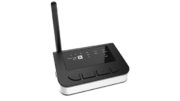There’s still a lot of confusion as to whether or not today’s cell phone signal boosters will work with 5G. After all, 5G is the latest and greatest form of cell service. It’s what people want. Yet, a lot of blogs (including this one) have said at one time or another that cell boosters don’t work with 5G. That’s true, and it’s also false. What we need here is some clear guidance, and that’s what makes this a perfect subject for an article.
First, understand what 5G is (and isn’t.)
5G is a complete re-thinking of how cell phones work. Really, the last time this was done at this level was over a decade ago. 3G was really the first form of cell service to support data in any meaningful way. Yeah, there was a way to get something out of 2G, but you needed a lot of patience and the result was usually simple and boring. By creating a new pathway for high-speed data, 3G created an opportunity for real web pages to be sent over the air.
In the United States, there’s no law about how you market the name of your cell service. So, most cell carriers started rolling out 3G without most of the important features in place. When they finally started rolling out the full 3G experience, they called it 4G. This was a bit of a problem because there was already a standard called “4G.” When that standard started rolling out in the US, carriers called it LTE. I know, it’s confusing.
With 5G, everything got rethought from top to bottom. Voice calls were treated like data transfers, but given lower priority since they didn’t really need a lot of bandwidth. On the other hand, 5G data was optimized to take advantage of as much bandwidth as possible. The only real limitation to 5G speeds is the amount of bandwidth available. And the only limitation to the amount of bandwidth available … was the number of people expected to use it at the same time.
The “goldilocks” method of 5G
There are three different 5G frequency models. The first, which is often called millimeter-wave or ultra-wide-band, uses super-high frequencies. This puts a massive amount of bandwidth in play so every data transfer can be lightning fast. It’s not perfect, though. High-frequency broadcasts take a lot of power, and without them distance is limited. Unless you want to carry around a car battery to power your phone, you’ll only be able to reach a cell tower 500 feet away. That means a lot more towers and frankly, that doesn’t make sense in many suburban and rural settings.
The second form of 5G is commonly referred to as “nationwide” 5G. It uses frequencies from 600-900MHz. These frequencies were once used for 3G service and for broadcast TV. There isn’t a lot of bandwidth there, since these lanes were designed back in the time when super speed wasn’t needed. But, these frequencies are great for longer distances, and it’s pretty common to get cell service 1-2 miles from a tower.
And then, there’s mid-band 5G, which is just now rolling out. Mid-band 5G uses frequencies around the same range as private broadcasts like big old satellite dishes, air traffic control, and stuff like that. There’s more bandwidth there for the public’s use than there is in the “nationwide” bands, so speeds are faster. Because of the frequency ranges, you can get broadcasts up to about 1 mile from the tower. It’s a good compromise, although nothing is perfect. Mid-band 5G is rolling out slowly because air traffic controllers are worried that it will make planes fall out of the sky. (Remember, these are the same people who said that using your phone on a plane at all would make it fall out of the sky.)
How all of that relates to cell boosters
Today’s consumer cell phone signal boosters work with the same frequencies they worked with back in 2014, back in the 4G and LTE days. There are some commercial-grade boosters for the higher 5G frequencies so we know the tech is there and it works. What’s the holdup? The FCC has been without a full set of commissioners since 2021, and for four years before that the FCC chief was actively working to gut the commission from the inside. It’s been close to a decade since the FCC has been firing on all cylinders. Regardless of your politics, here’s the fact: a hobbled, toothless FCC isn’t going to approve new cell boosters. They just won’t have the time to test them.
But it’s not all doom and gloom. Most “nationwide” 5G service is on frequencies between 700 and 850MHz. These frequencies were originally used for 2G and 3G cell service, which has since shut down. So pretty much every cell booster ever sold, even the very old ones, will have the ability to boost at least some 5G signals.
Making it as clear as possible
If you have a cell booster, it’s going to improve your 5G experience. You’ll get clear calls and fast data. You won’t get warp-speed data, but chances are your data speeds will be close to your wired internet speeds. And if you think about it, that’s not so shabby.
If you’re ready for a cell booster, or if you have any questions about how spaces from 50 square feet to 500,000 square feet can benefit from cell phone signal boosters, give us a call! We’re here during East Coast business hours at 888-233-7563. If it’s after hours, fill out the form below and we’ll get back to you, usually within one business day.





